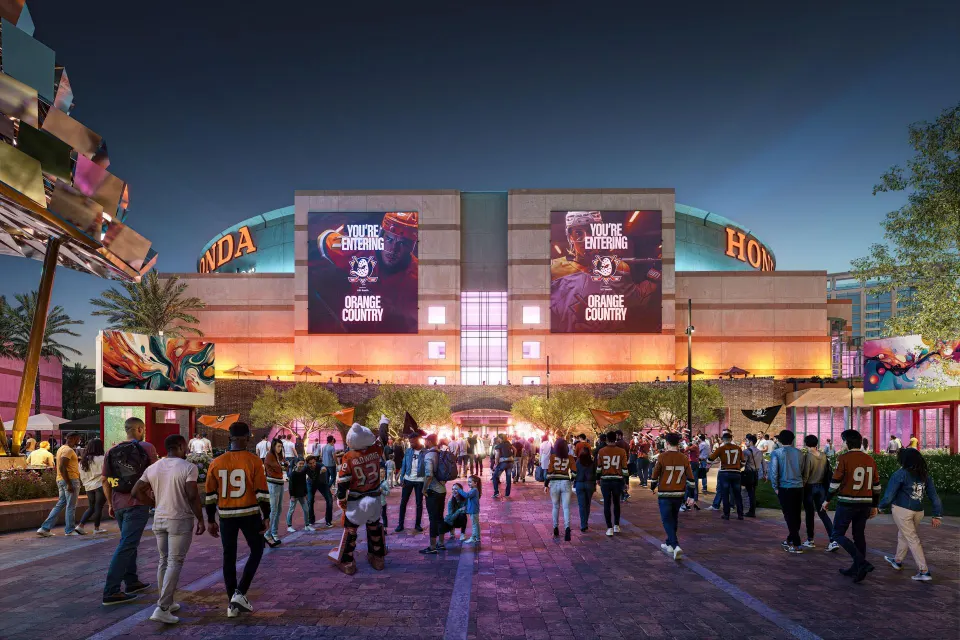Credit: Malcolm Lemmons
In recent months, sports venue development has dominated headlines.
- The USTA unveiled plans for an $800 million investment in the US Open.
- The Anaheim Ducks announced a $1 billion arena renovation.
- The Washington Commanders revealed an eye-watering $3.8 billion stadium project in D.C.
These figures signal that the race to build and renovate arenas is accelerating. But while billions are being poured into construction, the real story is not about the concrete — it’s about the technology woven into these venues.
The Tech That Will Define the Next Decade
Over the next 10 years, arenas and stadiums will transform into fully integrated, tech-enabled ecosystems. Here are some of the innovations that will soon become standard:
- Smart court and turf systems: Surfaces that self-adjust, monitor conditions, and optimize performance.
- Robotic food delivery: Automating concessions for faster, contactless service.
- Enhanced videoboards and jumbotrons: Immersive displays that bring every corner of the venue to life.
- AI-guided parking: Smart systems that reduce congestion and get fans to their seats quicker.
- Facial recognition for entry: Seamless access with improved security.
- Automated restrooms: Touchless systems improving hygiene and efficiency.
- Personalized VR and AR: Fans experiencing matches in entirely new dimensions.
- Mixed-reality sponsorships: Digital overlays transforming signage into interactive, global assets.
This is not just about novelty. AI-driven venues will lower operating costs, improve sustainability, and create richer fan experiences. For clubs and rights-holders, the stadium of the future is as much a technology platform as it is a sporting one.
What This Means for Leagues, Teams, and Investors?
- Redefining ROI
- Traditional venue ROI was about ticket sales and concessions. With tech-enabled venues, ROI now includes data monetization, sponsorship uplift, and direct-to-fan engagement. Investors need to model returns differently.
- Fan Engagement as the Product
- The stadium is no longer just a place to watch the game. It becomes a 365-day engagement hub, hosting concerts, esports, conferences, and immersive experiences. Properties that design around “fan journeys” will stand out.
- Sponsorship Transformation
- Mixed-reality signage and VR activations open entirely new categories of rights packaging. Forward-looking clubs should experiment now, before these assets become commoditized.
- Operational Efficiency
- Automation in parking, concessions, and entry reduces costs and improves flow. Early adopters will not only create better experiences but also demonstrate measurable environmental and financial savings.
- Global Benchmarking
- Stakeholders should study developments in the U.S., Gulf region, and Asia, where state-of-the-art stadium tech is becoming the norm. Lessons from these markets can help avoid costly missteps in planning and integration.
Final Word
The new stadium race isn’t about who builds the tallest, biggest, or most expensive venue. It’s about who integrates the smartest technologies to future-proof the fan experience and commercial model.
The future of sports venues is already here — but few organizations have a clear roadmap to harness it. The difference between building a stadium and building a platform could define the next generation of winners in sport.
Are you ready to turn your arena into more than just a venue?
Don’t Just Watch Sport, Understand It. Join the 365247 Newsletter for daily insights


